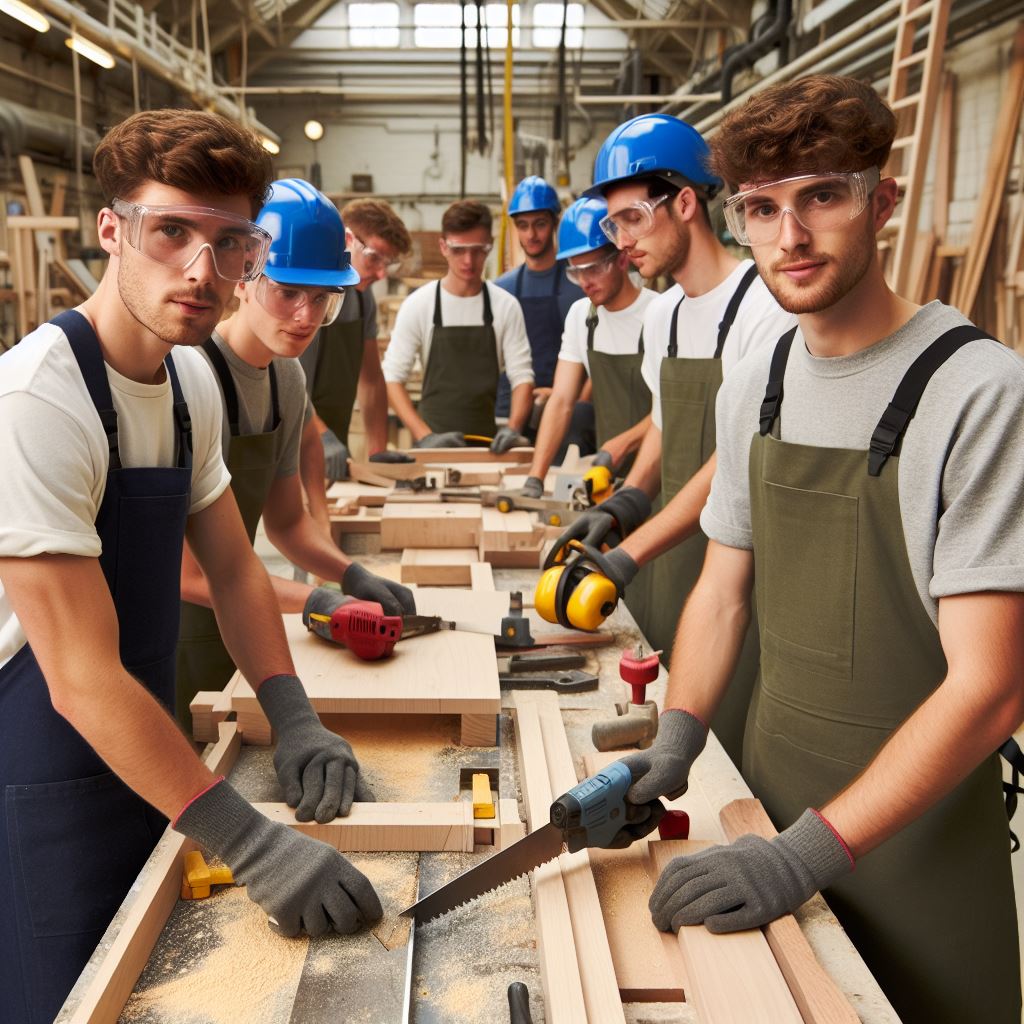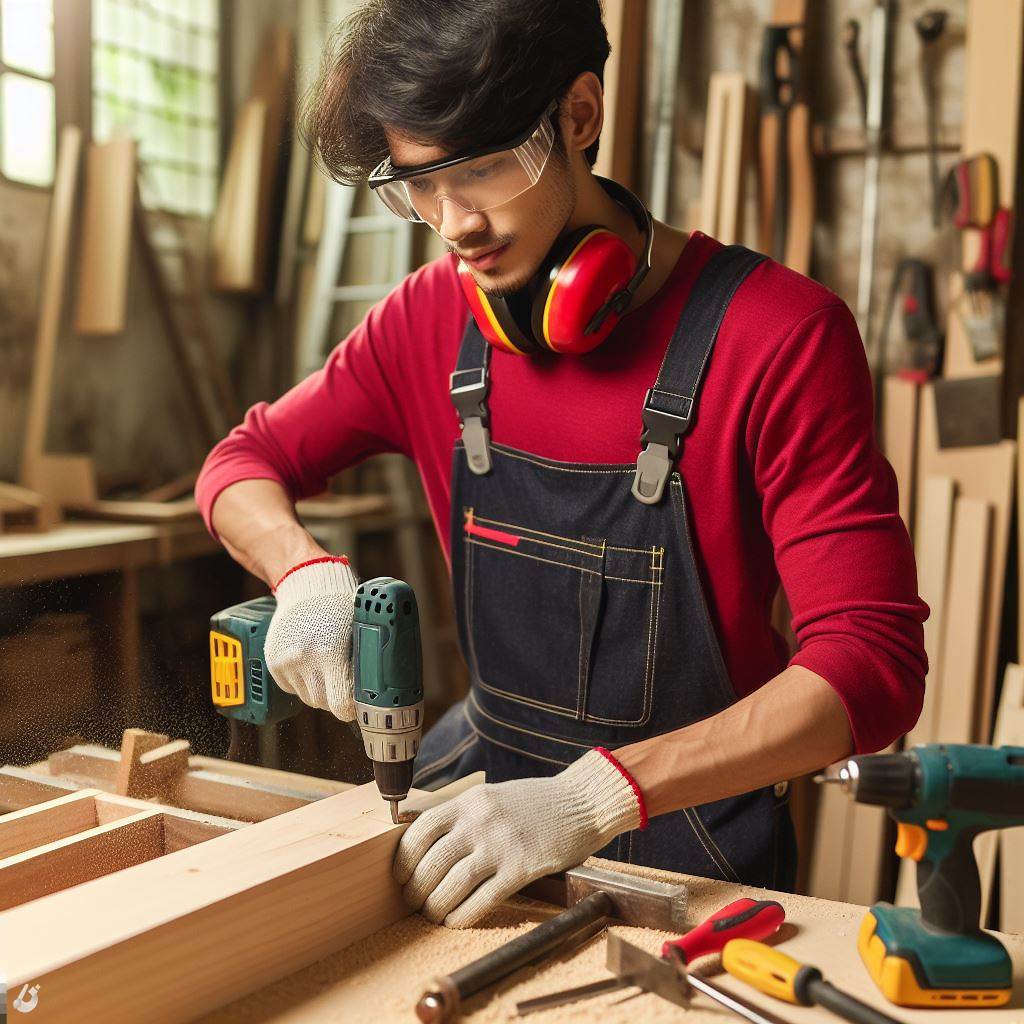Introduction
Joinery is an integral part of various sectors in the UK, making its future crucial. This blog post explores the significance of joinery across industries and aims to shed light on what lies ahead.
Joinery, the art of connecting wood joints, plays a vital role in construction, furniture making, and architectural design.
Its importance cannot be understated in creating sturdy structures, aesthetic furniture pieces, and visually appealing spaces.
This blog post aims to delve into the future prospects of joinery in the UK, highlighting emerging trends, advancements in technology, and potential challenges.
By understanding the future of joinery, professionals and enthusiasts can adapt to changing demands and stay ahead in their respective fields.
This section provides an insight into the evolving joinery landscape, emphasizing its significance beyond traditional woodworking.
With the advent of automation and innovative techniques, joinery is expected to undergo substantial transformations.
By exploring these advancements, this blog post aims to equip readers with valuable knowledge to embrace the future of joinery in the UK.
History of Joinery in the UK
Joinery has profoundly shaped the UK’s architectural history, evolving from medieval timber construction to contemporary bespoke creations.
Skilled joiners crafted intricate structures with traditional techniques, defining British architecture. Notable examples, like Westminster Hall’s wooden roof, highlight the precision of medieval joiners.
Timber-framed houses in Chester and York showcase centuries-old woodwork with elaborate carvings.
The Georgian and Victorian eras brought sophisticated joinery, featuring intricate paneling and grand staircases.
The Industrial Revolution introduced technological advancements, leading to a decline in timber use.
However, traditional joinery’s value persisted, evident in restoration projects preserving historic craftsmanship.
In recent years, a revival of traditional joinery methods emerged, blending craftsmanship with modern technology.
Personalized UK Career Consulting
Receive tailored career guidance designed just for you. Get actionable steps and expert support to boost your career in 1-3 days. Take control of your career now.
Get StartedToday, joinery combines traditional artistry with computer-aided design and sustainable practices, ensuring longevity and environmental friendliness.
The history of joinery stands as a testament to craftsmen’s skill, artistry, and adaptability across the ages, shaping the UK’s architectural landscape.
Read: Understanding the Role of a Site Foreman
Current State of Joinery in the UK
The current state of joinery in the UK is influenced by several factors including the demand and market, technological advancements, and challenges faced by joiners in the contemporary industry.
Current Demand and Market for Joinery in the UK
The demand for joinery in the UK remains strong as it plays a crucial role in various construction and interior design projects.
Joinery involves crafting and installing wooden elements such as doors, windows, staircases, cabinets, and furniture.
The UK construction industry has been experiencing significant growth in recent years, leading to an increased demand for joinery services.
Additionally, the rise in house refurbishments and renovations has further contributed to the market for joinery.
Furthermore, there is a growing trend towards using sustainable and eco-friendly materials, with wood being a popular choice.
This has boosted the demand for skilled joiners who can work with wood and create bespoke, high-quality products.
Impact of Technological Advancements on Joinery Practices
Technological advancements have revolutionized joinery practices in the UK, allowing for more efficient and precise craftsmanship.
CAD (Computer-Aided Design) software has become an integral tool for joiners, enabling them to create detailed and accurate digital models before starting the physical construction process.
This helps to streamline the workflow, reduce errors, and enhance overall productivity.
The availability of advanced machinery and equipment has also transformed joinery practices.
Your Dream Job Starts with a Perfect CV
Get a tailored CV and cover letter that captures your unique strengths and stands out in your industry. Let us help you make an unforgettable first impression.
Get StartedCNC (Computer Numerical Control) machines, for example, can automate many tasks, such as cutting, shaping, and drilling, resulting in faster production times and improved consistency.
Additionally, modern finishes and coatings have extended the lifespan of joinery products and reduced the maintenance requirements.
This has made joinery more attractive to customers and contributed to the overall growth of the industry.
Challenges Faced by Joiners in the Contemporary Industry
Despite the positive market conditions and technological advancements, joiners in the UK also face certain challenges in the contemporary industry.
One major challenge is the scarcity of skilled craftsmen. The decline in joinery apprenticeships and the lack of young people entering the trade have led to a shortage of qualified professionals.
This not only affects productivity but also contributes to increased labor costs. Another challenge is the competition from mass-produced, cheaper joinery products imported from abroad.
These products may not meet the same quality standards as locally crafted joinery, but they often pose a pricing disadvantage for UK joiners.
Furthermore, the industry faces ongoing pressure to embrace sustainability and reduce its environmental impact.
Joiners need to source wood from responsible and certified suppliers and adopt eco-friendly production processes. This adds complexity and cost, further challenging joiners in the contemporary industry.
In general, joinery in the UK is experiencing a strong demand due to the growth of the construction industry and the popularity of sustainable materials.
Technological advancements have improved joinery practices, but there are challenges such as a shortage of skilled craftsmen and competition from cheaper imports.
Joiners must adapt to these circumstances to thrive in the contemporary industry.
Read: Health and Safety: Top Priority for UK Builders
Trends and Innovations
Joinery in the UK is undergoing transformative trends driven by sustainability, technology, and innovative techniques.
Optimize Your LinkedIn for Success
Boost your LinkedIn profile with a professional bio, keyword-rich headline, and strategic recommendations that attract recruiters. Stand out from the crowd and get noticed.
Optimize NowJoiners embrace eco-friendly materials and practices, incorporating responsibly sourced timber and low VOC finishes.
Advanced technologies, including CAD software and CNC machines, revolutionize precision and efficiency in joinery.
Modern joiners fuse traditional methods with contemporary approaches, experimenting with unconventional shapes and imaginative space use.
Smart technology integration is a rising trend, with joinery featuring built-in charging stations, hidden wiring, and smart storage solutions.
The rise of modular construction influences joinery, offering cost-effective, time-saving, and flexible solutions.
Glass and metal are gaining popularity in joinery, adding sophistication and elegance to contemporary designs.
These trends reflect the evolving demands of consumers and the industry’s commitment to sustainability and innovation, ensuring a promising future for joinery in the UK.
Read: How to Start a Career in Construction in the UK

Future Prospects and Opportunities
The potential growth and opportunities for joinery in the UK
- Joinery industry in the UK has immense potential for growth in the coming years.
- With the construction sector booming, the demand for joinery products is expected to rise.
- The government’s commitment to infrastructure development provides further opportunities for the joinery sector.
- Increase in home renovations and remodeling projects will drive the demand for joinery services.
- Technological advancements in joinery techniques can enhance productivity and create more growth prospects.
The role of joinery in green building and sustainable architecture
- Joinery plays a crucial role in green building as it offers sustainable and eco-friendly solutions.
- Timber, a primary material used in joinery, is renewable and has a lower carbon footprint compared to other materials.
- Joinery products can contribute to energy efficiency by providing proper insulation for windows and doors.
- Well-crafted joinery items can enhance natural light and ventilation in buildings, reducing the need for artificial lighting and cooling.
- Using sustainable joinery materials can help achieve green building certifications and comply with environmental regulations.
The demand for customized and bespoke joinery products
- Customers today prefer unique and personalized products, leading to a growing demand for customized joinery.
- Bespoke joinery allows for tailored solutions that fit specific design requirements and individual preferences.
- Architects and interior designers often seek bespoke joinery manufacturers to create distinct and high-quality products.
- The demand for customized joinery extends to both residential and commercial projects, offering diverse opportunities.
- Bespoke joinery provides a competitive edge, allowing businesses to differentiate themselves and attract discerning customers.
Ultimately, the future of joinery in the UK looks promising with ample growth prospects and opportunities.
The construction industry’s growth, focus on sustainability, and the demand for customized products contribute to this positive outlook.
Joinery businesses need to adapt to technological advancements and market trends to stay competitive and meet evolving customer needs.
By embracing green building practices and offering tailored solutions, joinery companies can secure a strong position in the market and thrive in the future.
Read: The Future of Construction Work in the UK
Challenges and Possible Solutions
In this section, we will identify the challenges that the joinery industry might face in the future and discuss possible strategies and solutions to overcome these challenges.
Additionally, we will address the need for skills development and training in the joinery sector.
1. Challenges in the Joinery Industry
- Changing customer preferences and demands for more customized joinery products.
- Increase in competition from cheaper alternatives and mass-produced furniture.
- Shortage of skilled joiners due to lack of interest in traditional craftsmanship.
- Rising material and labor costs impacting profit margins.
- Technological advancements requiring constant adaptation and investment.
2. Strategies and Solutions
- Invest in research and development to create innovative joinery products that cater to changing customer preferences.
- Collaborate with architects and interior designers to offer comprehensive joinery services.
- Explore new markets and export opportunities to minimize the impact of local competition.
- Promote the benefits of handcrafted joinery, highlighting the quality and uniqueness of these products.
- Offer training and apprenticeship programs to address the skills shortage and attract new talent.
- Implement cost-saving measures such as streamlining production processes and sourcing materials locally.
3. The Importance of Skills Development and Training
Skills development and training are crucial for the future of the joinery industry. With the shortage of skilled joiners, it is essential to attract and train new talent to ensure the continuity of craftsmanship.
By offering apprenticeships, joinery businesses can provide hands-on training and practical experience to young individuals interested in pursuing a career in joinery.
These programs should not only focus on technical skills but also include modules on customer service, project management, and business development.
Furthermore, partnerships with educational institutions and vocational training centers can help create structured training programs that provide a balance between theoretical knowledge and practical skills.
This ensures that joiners are equipped with the necessary expertise to meet the evolving demands of the industry.
By investing in skills development and training, the joinery industry can overcome the challenges it faces, promote craftsmanship, and continue to thrive in the future.
Conclusion
The future of joinery in the UK holds great promise and potential. Throughout this blog post, we have explored the various aspects of joinery, including its history, current trends, and future technologies.
Joinery plays a crucial role in the construction and design industry. It not only provides structural support but also adds aesthetic value to buildings and interiors.
The skilled craftsmanship of joiners brings beauty and functionality together.
As we move forward, it is imperative to recognize the importance of joinery and its contribution to sustainable and eco-friendly construction practices.
With the rise of innovative techniques and materials, joinery is undergoing a transformation that will shape the future of the industry.
For those interested in pursuing a career in joinery or staying updated with the latest developments, it is essential to explore the opportunities available.
From apprenticeships to specialized training programs, there are various paths to gain expertise in this field.
By keeping abreast of emerging trends and technologies, individuals can position themselves at the forefront of the joinery industry.
This not only opens doors to exciting projects but also fosters a sense of creativity and fulfillment.
In summary, the future of joinery in the UK is brimming with possibilities.
It is an industry that marries traditional craftsmanship with modern innovation, creating spaces that are both functional and visually appealing.
So, let us stay updated and embrace the opportunities waiting in the world of joinery.
[E-Book for Sale]
500 Cutting-Edge Tech Startup Ideas for 2024 & 2025: Innovate, Create, Dominate
$19.99 • 500 Tech Startup Ideas • 62 pages
You will get inspired with 500 innovative tech startup ideas for 2024 and 2025, complete with concise descriptions to help you kickstart your entrepreneurial journey in AI, Blockchain, IoT, Fintech, and AR/VR.




